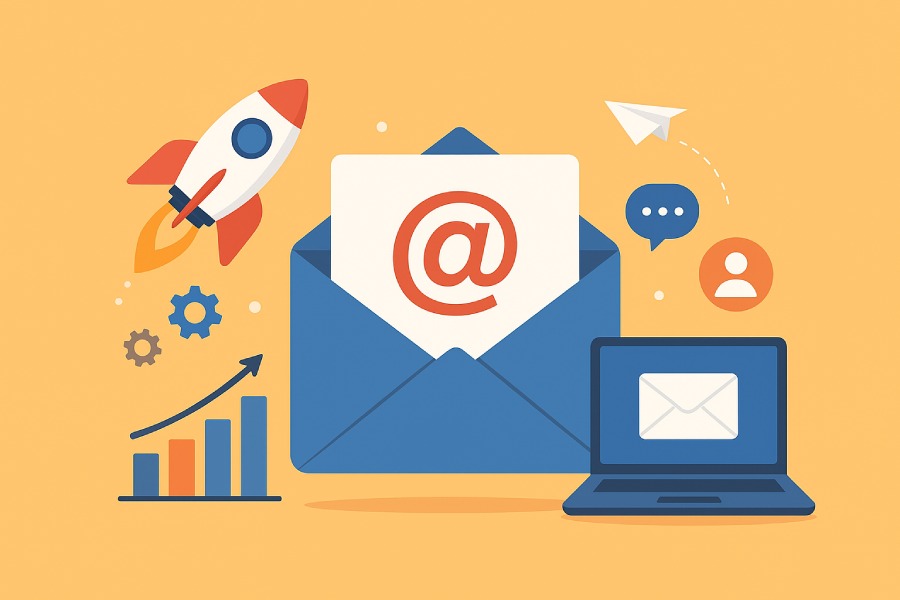Email Marketing For Startups: Strategies And Tools Every Entrepreneur Should Know
Email marketing remains one of the most powerful and cost-effective tools for startups aiming to build brand awareness, nurture leads, and drive conversions. For entrepreneurs working with limited budgets and resources, mastering the right strategies and tools can make all the difference in achieving growth and customer loyalty.
From crafting personalized email campaigns to automating workflows and tracking engagement metrics, email marketing offers startups a direct channel to connect with their audience. This guide explores proven strategies and essential tools every entrepreneur should know to maximize the impact of their email marketing efforts.
Understanding Email Marketing and Its Importance for Startups
Email marketing remains one of the most effective channels in digital marketing for startups aiming at sustainable growth. Unlike many outbound marketing tactics such as cold email outreach, which can often result in higher bounce rates and unsubscribe rates, well-executed email campaigns facilitate inbound marketing by fostering subscriber engagement and nurturing leads throughout the marketing funnel.
Startups leveraging email marketing benefit from direct communication with potential and existing customers, enabling enhanced customer retention and conversion optimization. The ability to track email marketing metrics such as email open rates, click-through rates, and ROI analysis provides entrepreneurs insightful data to refine their efforts.
Industry leaders like Seth Godin and Neil Patel repeatedly emphasize how personalized email marketing, coupled with strategic content marketing, enhances touchpoints along the customer journey and sales funnel.
Moreover, integrations with CRM tools and marketing automation platforms—such as HubSpot, ActiveCampaign, and Drip—empower startups to automate transactional emails, drip campaigns, and behavior-triggered email drip sequences that improve lead nurturing and increase the lifetime value of customers.
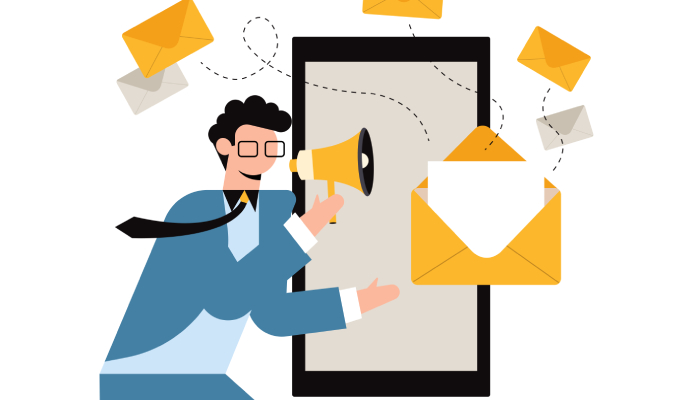
Building Your Startup’s Email List: Best Practices and Legal Considerations
Effective email list building forms the backbone of any robust email marketing strategy. Startups should prioritize quality over quantity by employing double opt-in methods to ensure subscriber consent and reduce bounce rate. Platforms like Mailchimp, ConvertKit, and GetResponse offer user-friendly tools for capturing leads via optimized signup forms designed with responsive design principles, guaranteeing seamless experience across devices.
Implementing lead generation strategies such as offering valuable content, hosting webinars, and utilizing social media can help grow an engaged email list. Equally important is compliance with regulations including the CAN-SPAM Act and GDPR email marketing guidelines, which govern email compliance to protect user privacy and ensure legitimate marketing practices. Ignoring these legal frameworks can result in penalties and damage to brand reputation.
To maximize deliverability, startups should also monitor email frequency, set up clean segmentation using email list segmentation techniques, and regularly purge inactive subscribers. Tools like MailerLite and Benchmark Email provide analytics dashboards that track unsubscribe rate and bounce rate, enabling better management of email list health.

Crafting Compelling Email Content That Engages Your Audience
Crafting compelling content is critical to increasing both email open rates and click-through rates. Successful startup marketing blends content marketing with a strong call to action embedded within customizable email templates offered by platforms such as Campaign Monitor, AWeber, and Klaviyo. Effective email subject lines are paramount—they must capture attention while maintaining relevance and avoiding spam triggers.
Startups should focus on delivering value through newsletters, educational content, promotions, and personalized recommendations, utilizing dynamic content blocks to tailor messages to varying subscriber segments. Email automation enables sending targeted messages aligned with user behavior, such as abandoned cart reminders or personalized welcome email series, enhancing subscriber engagement.
A/B testing of email subject lines, email frequency, and body content allows startups to iteratively optimize campaigns. Insights gained from email analytics support data-driven decision-making around content and timing. Thought leaders like Ann Handley and Brian Dean advocate for storytelling and authenticity to forge genuine connections, driving higher conversion rates and customer loyalty.

Segmentation Strategies to Target the Right Customers
Effective customer segmentation is fundamental to optimizing email marketing results for startups. By dividing the email list based on demographics, purchase history, engagement levels, or behavioral triggers, startups can send highly relevant messages that resonate with each group, improving conversion optimization.
Segmentation empowers personalized email marketing, allowing the use of dynamic content and tailored email templates engineered to specific audience segments. For example, a SaaS startup employing Klaviyo or Omnisend might segment users by trial engagement to nurture leads differently from paying customers, moving them strategically through the sales funnel.
With advanced CRM integration, platforms like Zoho Campaigns and SendGrid assist in maintaining up-to-date customer segmentation aligned with the customer journey. This precision in targeting lowers unsubscribe rate and bolsters subscriber engagement by respecting preferences and needs, ensuring that email campaigns contribute effectively to startup growth.

Personalization Techniques to Increase Open and Click Rates
Personalization goes beyond addressing the subscriber by their first name—it involves leveraging email list segmentation, behavioral data, and dynamic content to create individualized experiences. By embedding personalized email marketing techniques within the marketing automation platforms such as ActiveCampaign and Mailjet, startups can deliver messages timed with behavioral triggers like recent purchases or inactivity.
Personalized email subject lines tailored to recipient interests have been shown to boost email open rates significantly, while customized calls to action drive click-through rates. Incorporating these elements in combination with responsive design for mobile-friendly emails ensures all subscribers engage, regardless of the device used.
Startups should also employ email drip sequences triggered by specific actions, such as a welcome email series that introduces new subscribers to brand values and product benefits, nurturing them along the customer journey. Platforms like Sendinblue and Emma offer robust tools for creating sophisticated personalized workflows that enhance lead nurturing and overall customer retention.
In addition, continuous A/B testing and email analytics allow entrepreneurs to measure the effectiveness of their personalization tactics, refine content, and improve email deliverability. The collective application of these strategies forms a comprehensive email marketing strategy that drives startup success, as endorsed by marketing experts including Pat Flynn, Ryan Deiss, and Gary Vaynerchuk.
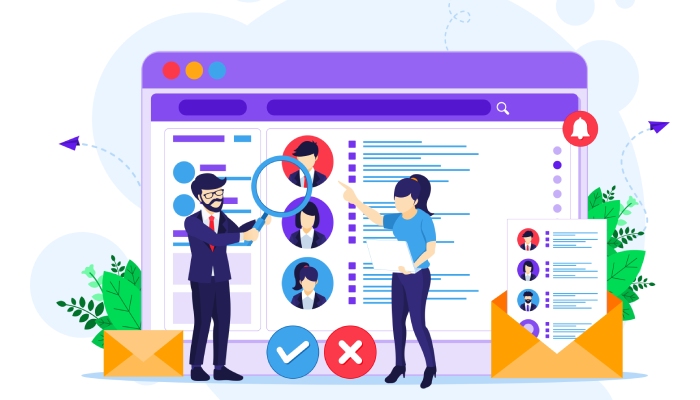
Choosing the Right Email Marketing Platform for Your Startup
Selecting the ideal email marketing tool is foundational to executing successful email campaigns that boost startup growth. Startups often prioritize platforms that combine robust email automation features with user-friendly interfaces for effective email list building and subscriber engagement. Leading marketing automation platforms such as Mailchimp, ActiveCampaign, HubSpot, and ConvertKit offer excellent options tailored for startups with dynamic needs.
When vetting options, pay close attention to capabilities like customer segmentation, CRM integration, and support for drip campaigns. For example, ActiveCampaign excels in sophisticated behavioral triggers that enable personalized email marketing based on user actions within the sales funnel.
Similarly, HubSpot integrates inbound marketing tools with email automation to nurture leads throughout the customer journey seamlessly. Platforms such as Nureply, Sendinblue, and AWeber cater well to startups focused on email deliverability and compliance, including adherence to GDPR email marketing policies and the CAN-SPAM Act through double opt-in processes.
Additionally, consider features that optimize conversion optimization, including A/B testing capabilities, dynamic content support, and customizable email templates with responsive design. Pricing structures should align with your current email list size and anticipated growth to maintain ROI analysis favorably as your marketing funnel expands.
Automating Your Email Campaigns: Workflows and Triggers
Email automation is indispensable for startups aiming to scale efficiently while maintaining personalized communication. Developing automated workflows and leveraging behavioral triggers can transform generic emails into targeted drip campaigns that nurture leads at various touchpoints.

For instance, setting up a welcome email series triggered upon subscription introduces your brand dimensionally, increasing email open rates and reducing unsubscribe rate. Marketing automation platforms like Drip, Omnisend, and Klaviyo enable startups to create complex email drip sequences that consider buyer personas, purchase history, and engagement levels to tailor messaging dynamically. This leads to enhanced customer retention and improved click-through rates.
Transactional emails, often overlooked, provide essential opportunities for engagement. Automating order confirmations or shipping notifications reinforces your brand presence within the sales funnel and supports compliance requirements. Moreover, cold email outreach can be systematized to ensure deliverability and reduce bounce rate when combined with CRM integration and email list segmentation.
Designing Mobile-Friendly and Responsive Email Templates
With increasing email opens occurring on mobile devices, responsive design in email templates is not optional—it’s critical for maximizing subscriber engagement. Startups should employ email marketing tools like Campaign Monitor, Benchmark Email, or Moosend that provide drag-and-drop editors specifically designed for crafting mobile-optimized emails.
Responsive email templates adapt layout and call to action placement based on screen size, improving user experience and boosting conversion rates. Employing concise, compelling email subject lines paired with personalized email content—including dynamic content blocks—drives higher email open rates and click-through rates. Remember, personalization extends beyond addressing recipients by name; it includes tailoring offers and content relevant to customer segmentation.
It is also key to moderate email frequency to avoid subscriber fatigue, which can increase unsubscribe rates. Testing your email campaigns across multiple devices and inbox clients ensures consistent rendering and reduces potential deliverability issues.
Measuring Success: Key Metrics and Analytics for Email Campaigns
Effective email marketing strategy hinges on robust email analytics to evaluate and refine campaign effectiveness. Key email marketing metrics startups should monitor include email open rates, click-through rates, conversion optimization rates, bounce rate, and unsubscribe rate.
Using platforms such as GetResponse, MailerLite, or Zoho Campaigns allows startups to extract detailed analytics that align with their marketing funnel stages and sales funnel goals. Integrating these insights with CRM data enhances lead generation and lead nurturing efforts by identifying high-value segments for personalized outreach.
Regular ROI analysis, scrutinizing the impact of drip campaigns and transactional emails against customer retention metrics, informs decisions on content marketing priorities and email frequency adjustments to optimize overall digital marketing outcomes.
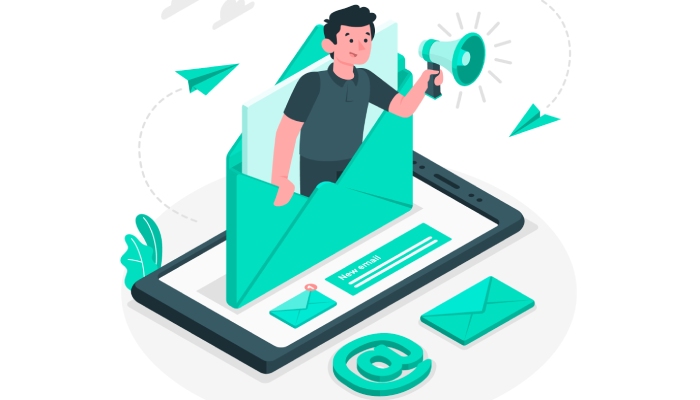
A/B Testing Strategies to Optimize Email Performance
A/B testing remains one of the most potent techniques for refining email campaigns. Testing variations of email subject lines, call to action wording, send times, and email templates enables startups to pin down which elements yield superior results in terms of open rates and click-through rates.
Thought leaders like Neil Patel and Ann Handley emphasize the value of systematic A/B testing within email marketing tools such as Mailjet, Emma, or Benchmark Email for sustainable startup marketing success. Testing dynamic content elements and personalized email marketing approaches across segments deepens subscriber engagement and guides data-driven content marketing decisions.
Consistently implementing experiments around email deliverability factors and email frequency can reduce bounce rates and unsubscribe rates, further enhancing campaign effectiveness within email compliance frameworks. Sharing test results within marketing teams fosters collective learning and sharpens the overall email marketing strategy.

Integrating Email Marketing with Other Startup Marketing Channels
For startups aiming to accelerate startup growth, integrating email marketing with broader inbound and outbound marketing strategies is essential. Synchronizing email campaigns with social media, content marketing efforts, SEO initiatives, and paid advertising amplifies lead generation and nurtures prospects through the sales funnel more holistically.
CRM platforms like HubSpot and ActiveCampaign facilitate seamless integration of email automation workflows with customer data from other channels, providing a 360-degree view of the customer journey. This integration supports multi-channel drip campaigns and ensures consistent messaging, improving conversion optimization and customer retention.
Furthermore, incorporating insights from email analytics with data from Google Analytics or social media reporting enables startups to fine-tune email marketing strategy and marketing automation platforms toward higher ROI. Thought leaders such as Ryan Deiss and Gary Vaynerchuk advocate for this unified approach to digital marketing, combining content marketing with personalized email marketing to maximize the startup’s marketing potential and impact.

Avoiding Spam Filters and Ensuring High Deliverability
One of the most critical components of any successful email marketing strategy is maintaining excellent email deliverability. Startups often face challenges in this arena due to limited resources or inadequate knowledge about best practices. Email deliverability hinges on several factors, including list hygiene, compliance with regulations such as the CAN-SPAM Act and GDPR email marketing, and the technical setup of the sending infrastructure.
Begin with email list building efforts that prioritize quality over quantity by utilizing a double opt-in process. This helps reduce bounce rate and unsubscribe rate by ensuring subscribers genuinely want to receive your emails. Email marketing tools such as Mailchimp, Sendinblue, and ActiveCampaign offer built-in features to facilitate double opt-in, improving your list segmentation and overall compliance.
Next, focus on email content that encourages subscriber engagement without triggering spam filters. Personalized email marketing with dynamic content tailored to customer segmentation can significantly boost email open rates and click-through rates. Utilizing behavioral triggers for sending relevant emails improves the customer journey and minimizes reports of spam, while maintaining a balanced email frequency safeguards against overwhelming recipients.
Technical aspects also matter: authenticating your emails with SPF, DKIM, and DMARC protocols enhances credibility with Internet Service Providers (ISPs). Choosing a reputable marketing automation platform like HubSpot or Klaviyo ensures your transactional emails and promotions are sent through dedicated IPs with high sender scores.

Monitoring email analytics such as bounce rate and unsubscribe rate is essential to identify deliverability issues early. Employ A/B testing on email subject lines and email templates to optimize deliverability and engagement rates continuously. Integrating your CRM system with your email marketing campaigns can facilitate better customer segmentation and improve ROI analysis.
Leveraging Drip Campaigns for Lead Nurturing and Customer Retention
Drip campaigns remain one of the most effective email automation strategies for startups focused on lead nurturing and customer retention. By delivering a carefully timed series of automated emails, startups can move prospects through the marketing funnel and sales funnel with precision.
Startups can build a welcome email series that introduces their brand and value propositions while setting subscriber expectations. Platforms like AWeber, MailerLite, and GetResponse provide robust functionality to create these email drip sequences, emphasizing email personalization to enhance subscriber engagement right from the start.
With the integration of CRM systems such as Zoho Campaigns or ActiveCampaign, marketers can leverage customer segmentation and behavioral triggers to send contextual and dynamic content. This personalized approach ensures each email resonates with the recipient’s current position in the customer journey.
Drip campaigns are particularly valuable for lead generation and conversion optimization, as they nurture cold email outreach leads gradually but systematically, increasing trust and brand awareness. Furthermore, nurturing efforts deepen customer retention by reinforcing the value customers receive post-purchase through tailored transactional emails and relevant content marketing pieces.

Continuous measurement of email marketing metrics, like open rates and click-through rates within drip campaigns, combined with A/B testing and responsive design considerations, enables startups to optimize these sequences for maximum ROI. Tools such as Campaign Monitor and SendGrid offer advanced analytics that inform these improvements.
Scaling Your Email Marketing Efforts as Your Startup Grows
As startups experience growth, scaling the email marketing strategy becomes imperative to sustaining momentum and maximizing returns. Scaling involves transitioning from basic email campaigns to sophisticated marketing automation platforms that handle increased subscriber volumes, complex customer segmentation, and advanced personalization tactics.
Leaders such as Neil Patel and Ryan Deiss emphasize the importance of integrating email marketing with broader digital marketing initiatives, including content marketing and inbound marketing, to maximize lead generation quality and conversion potential.
Implementing a CRM integration strategy is crucial at this stage to streamline data flow between sales and marketing teams, enabling tighter alignment throughout the sales funnel. Marketing automation platforms like HubSpot, Klaviyo, and ActiveCampaign provide the infrastructure necessary to run multichannel campaigns, automate workflows, and conduct ROI analysis effectively.
To support scaling, optimize your email templates for responsive design to ensure optimal display across devices, and maintain rigorous email compliance to adhere to regulations like GDPR email marketing. Monitoring email marketing metrics closely — including bounce rate, unsubscribe rate, and email deliverability — ensures that increased email frequency does not negatively impact subscriber engagement.
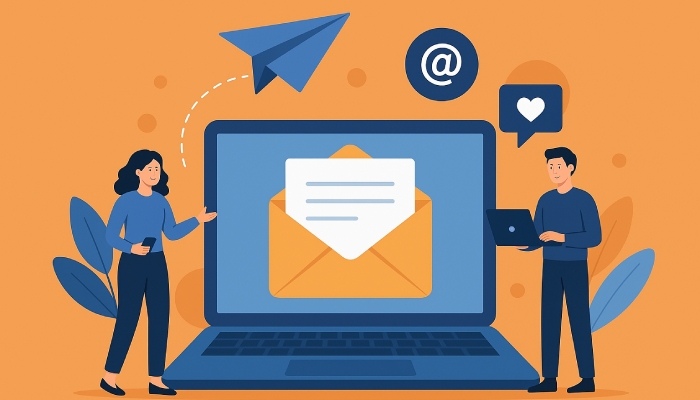
Also, adopting a data-driven approach with continuous A/B testing and leveraging email analytics can refine subject lines, call to action effectiveness, and content relevance. For startups, balancing outbound marketing initiatives like cold email outreach with inbound marketing strategies ensures sustainable, long-term growth.
Case Studies: Successful Email Marketing Campaigns from Notable Startups
Examining how notable startups have leveraged email marketing offers practical insights into best practices and innovative techniques.
Example 1: Airbnb’s Welcome Email Series – Airbnb, known for its personalized email marketing, excels with a welcome email series that uses dynamic content tailored based on user preferences and location. By applying behavioral triggers, Airbnb nurtures new users through email drip sequences that guide them through booking processes, significantly increasing both open rates and conversions. Their CRM integration allows for sophisticated customer segmentation, resulting in highly relevant email campaigns that optimize the marketing funnel.
Example 2: Slack’s Lead Nurturing Drip Campaigns – Slack utilizes marketing automation platforms like ConvertKit to build drip campaigns focusing on educating users and driving product adoption. Through thoughtful email personalization and strategic call to action placement, Slack improves subscriber engagement and reduces churn, contributing vastly to customer retention. Their emphasis on A/B testing email subject lines and content ensures continuous improvement in email deliverability and conversion optimization.
Example 3: Warby Parker’s Abandoned Cart Series – Warby Parker uses targeted drip campaigns to address cart abandonment by sending transactional emails coupled with personalized discounts. Their seamless CRM integration and email list segmentation allow for highly customized messages that enhance click-through rates and ROI. Additionally, all emails adhere to email compliance standards like CAN-SPAM, ensuring regulatory adherence and maintaining customer trust.
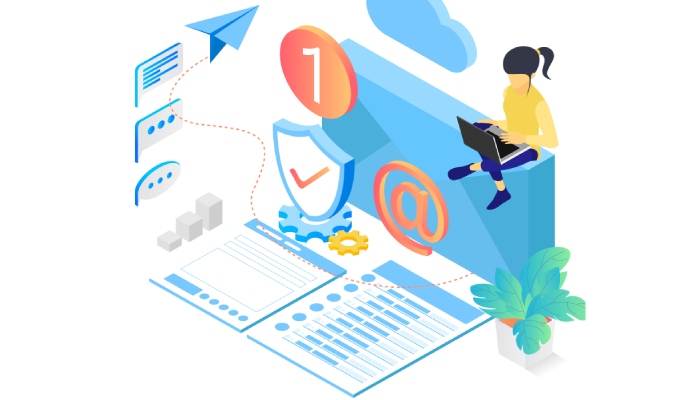
These examples demonstrate that successful startups leverage a combination of email automation, customer segmentation, and responsive design alongside strategic lead nurturing and conversion tactics. Influential marketers such as Seth Godin and Ann Handley advocate adopting such integrated approaches to thrive in today’s competitive digital marketing landscape.
FAQs
How can startups improve their email deliverability?
Startups should focus on maintaining clean email lists with double opt-in, complying with CAN-SPAM and GDPR email marketing laws, and authenticating emails with SPF, DKIM, and DMARC protocols. Utilizing reputable email marketing tools such as Mailchimp or SendGrid also improves deliverability.
What are drip campaigns, and why are they important?
Drip campaigns are automated email sequences designed to nurture leads and guide customers through the marketing funnel gradually. They enhance lead nurturing and customer retention by delivering timely, personalized content based on behavioral triggers.
How do I balance email frequency without annoying subscribers?
Maintaining a consistent but thoughtful email frequency that considers subscriber preferences is critical. Using email analytics to monitor unsubscribe rates and engagement metrics helps adjust frequency for optimal subscriber engagement.

Which email marketing tools are best for startups?
Popular tools like ActiveCampaign, ConvertKit, HubSpot, and MailerLite offer scalability, CRM integration, and automation features well-suited for startup marketing. The choice depends on specific needs like budget, list size, and automation complexity.
How can personalization increase conversion rates?
Email personalization—such as using dynamic content and customer segmentation—creates relevant messaging aligned to the recipient’s behavior within the sales funnel. This improves email open rates, click-through rates, and ultimately leads to better conversion optimization.
What role does compliance play in email marketing?
Compliance ensures adherence to laws like the CAN-SPAM Act and GDPR, protecting subscribers and your startup from legal penalties. It fosters trust and transparency, which are essential for long-term customer relationships.
How can startups scale their email marketing efficiently?
Startups should integrate their CRM with marketing automation platforms, use advanced customer segmentation, automate workflows, and continuously measure email marketing metrics. Combining inbound and outbound marketing strategies also supports sustainable growth.

Key Takeaways
- Maintaining high email deliverability requires list hygiene, compliance with email laws, and technical authentication protocols.
- Drip campaigns and lead nurturing sequences are vital for moving leads through the customer journey and improving retention.
- Scaling email marketing involves CRM integration, sophisticated segmentation, and leveraging marketing automation platforms.
- Personalization, dynamic content, and A/B testing are key to optimizing email open rates, click-throughs, and conversions.
- Notable startups achieve success by combining email automation with data-driven optimization and relevant content marketing tactics.

